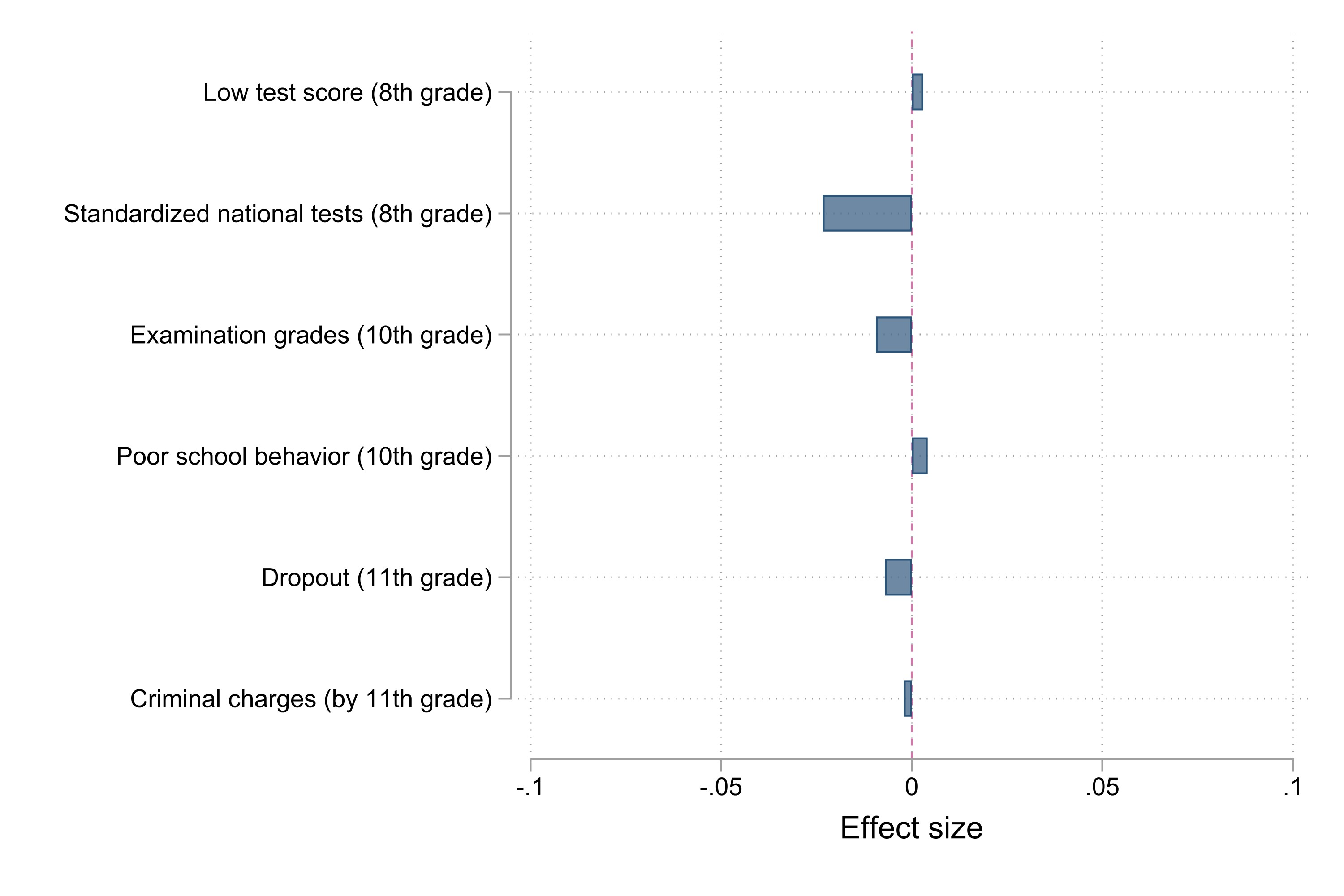Heterogeneity in Short- and Long-Term Impacts of School-Wide Positive Behavior Support (SWPBS) on academic outcomes, behavioral outcomes, and criminal activity
Nicolai Topstad Borgen, Oddbjørn Raaum, Lars Johannessen Kirkebøen, Mari-Anne Sørlie, Terje Ogden, Ivar Frønes
Does School-Wide Positive Behavioral Support (SWPBS) affect academic failure and marginalization?
If at all, effects are likely small in Norway. Exposure to SWPBS in grades 1-7 does not seem to have a noticeable influence on students’ later academic achievements, school dropout, later school problem behavior, or criminal charges, neither in general nor for at-risk students.

How to read this chart: This chart shows changes in outcomes for students exposed to SWPBS for 2-4 years compared to what would have happened in the absence of the intervention. None of the changes are statistically significant at the 5% level.
How to make sense of these null findings
An extensive literature finds that SWPBS successfully addresses short-term social and behavioral problems, but whether these effects persist is unknown. This study suggests that, in the long term, SWPBS does not reduce youths’ likelihood of struggling with academic and behavioral issues. Why?
Norwegian studies have found short-term effects, albeit to a less extent than in U.S. studies. It may be that Norwegian students and context differ from U.S. students and context. Few Norwegian students have behavioral problems, few grow up in low-income families and deprived environments, and most schools hold a high standard. Such factors may weaken SWPBS’s effectiveness. Another possible explanation is that SWPBS was less effective when scaled up nationally, compared with when SWPBS was evaluated under near-optimal delivery conditions, as in many U.S. studies. Finally, we evaluated SWPBS’s effects relative to changes comparison schools achieve. Lack of impact could be due to comparison schools implementing other programs or SWPBS replacing other equally effective programs.
This study suggests that the behavioral problems addressed by SWPBS may have limited trajectory-setting effects into adolescence. More research is needed to confirm whether this is due to Norwegian schools’ implementation problems and whether the conclusions apply outside the Norwegian context.
How did we do this study?
We used population-wide Norwegian register data, including one million students born from 1986-2002 and all 2,366 primary schools. During that time, some schools chose to implement SWPBS and others did not. We examined the change in average student outcomes before and after implementation of SWPBS (at those schools that implemented SWPBS). These changes were compared with changes in average student outcomes at comparison schools that didn’t implement SWPBS. This approach is known as a difference-in-difference design.
Full Article Citation:
Borgen, N.T., Raaum, O., Kirkebøen, L.J., Sørlie, M.-A., Ogden, T. &Frønes, I. (2021). Heterogeneity in Short- and Long-Term Impacts of School-Wide Positive Behavior Support (SWPBS) on academic outcomes, behavioral outcomes, and criminal activity. Journal of Research on Educational Effectiveness. DOI: https://doi.org/10.1080/19345747.2020.1862375.
